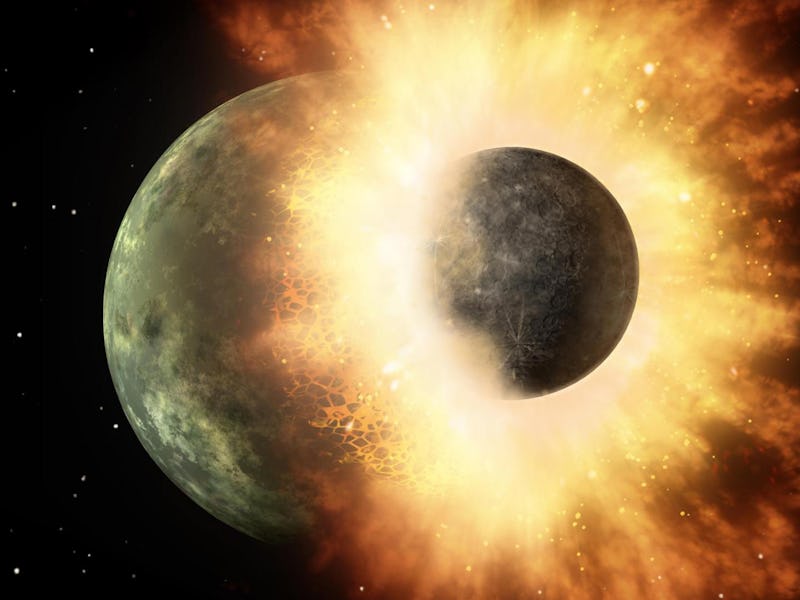Planetary Collision Brought Earth Its Life-Giving Carbon

New research points toward a source for nearly all our planet’s supply of carbon — a cosmic collision between Earth and a Mercury-like planet around 4.4 billion years ago.
Carbon is the basic building block of all life on Earth. What’s never been clear is exactly how or why that’s the case — logically, it seems like most of Earth’s carbon should have dissipated billions of years ago or have been pulled down into the planet’s iron-rich metallic core. Some experts believed that debris from meteorites and comets could have supplied carbon after Earth finished forming, but it’s unlikely such sources could have seeded the planet with the massive quantities necessary to jumpstart organic life.
Now, scientists at Rice University published the results of a new experiment in the journal Nature Geoscience that illustrate how Earth’s core might not be what we thought it was.
Iron has a strong affinity for carbon, but what if the core wasn’t as iron-rich as we thought, and instead had a higher ratio of silicon or sulfur? If the core had taken on that kind of alloy ratio from, say, a collision with another “embryonic” planet — one with an alloy profile not unlike Mercury’s — that would explain why the carbon wasn’t all locked into the core but instead free to remain in the silicate mantle. The team estimates the collision took place about 100 million years after Earth formed.
Schematic depiction of the collision.
“We thought we definitely needed to break away from the conventional core composition of just iron and nickel and carbon,” Rice petrologist and study co-author Rajdeep Dasgupta told the university. “So we began exploring very sulfur-rich and silicon-rich alloys, in part because the core of Mars is thought to be sulfur-rich and the core of Mercury is thought to be relatively silicon-rich. It was a compositional spectrum that seemed relevant, if not for our own planet, then definitely in the scheme of all the terrestrial planetary bodies that we have in our solar system.”
The new findings do a much better job of explaining the beginnings of organic life on Earth than previous models — and throw in a wicked-cool celestial crash to boot. The laboratory-controlled experiment is far from definitive proof, but it could push planetary scientists to think about habitable planet formation in new ways.